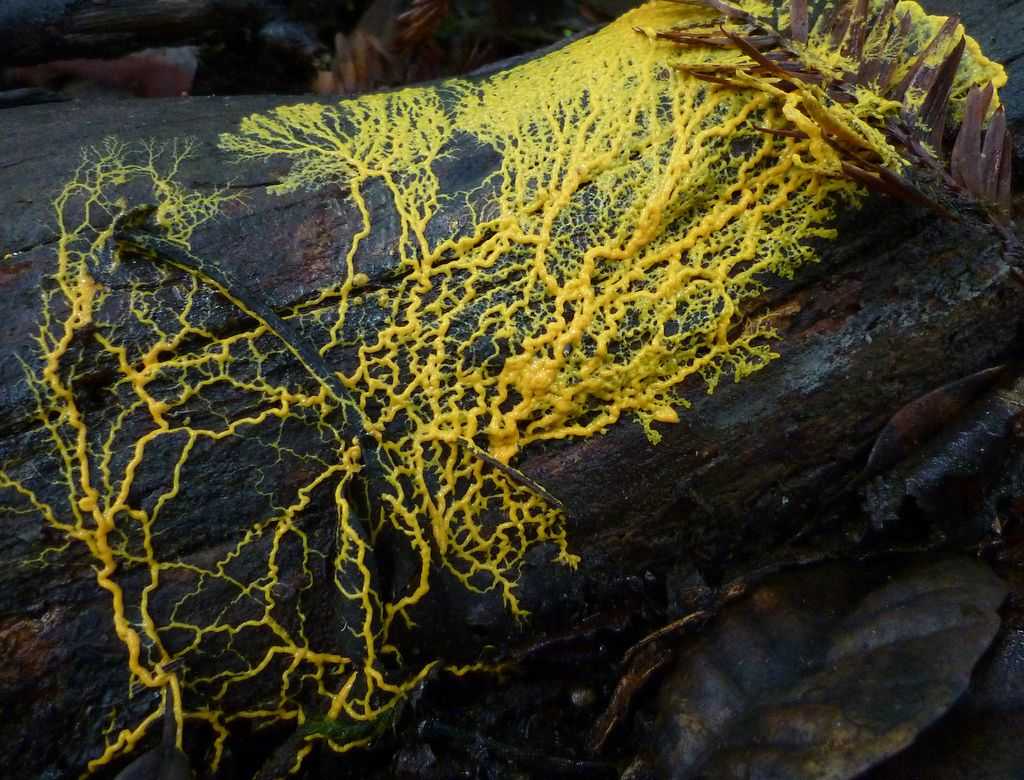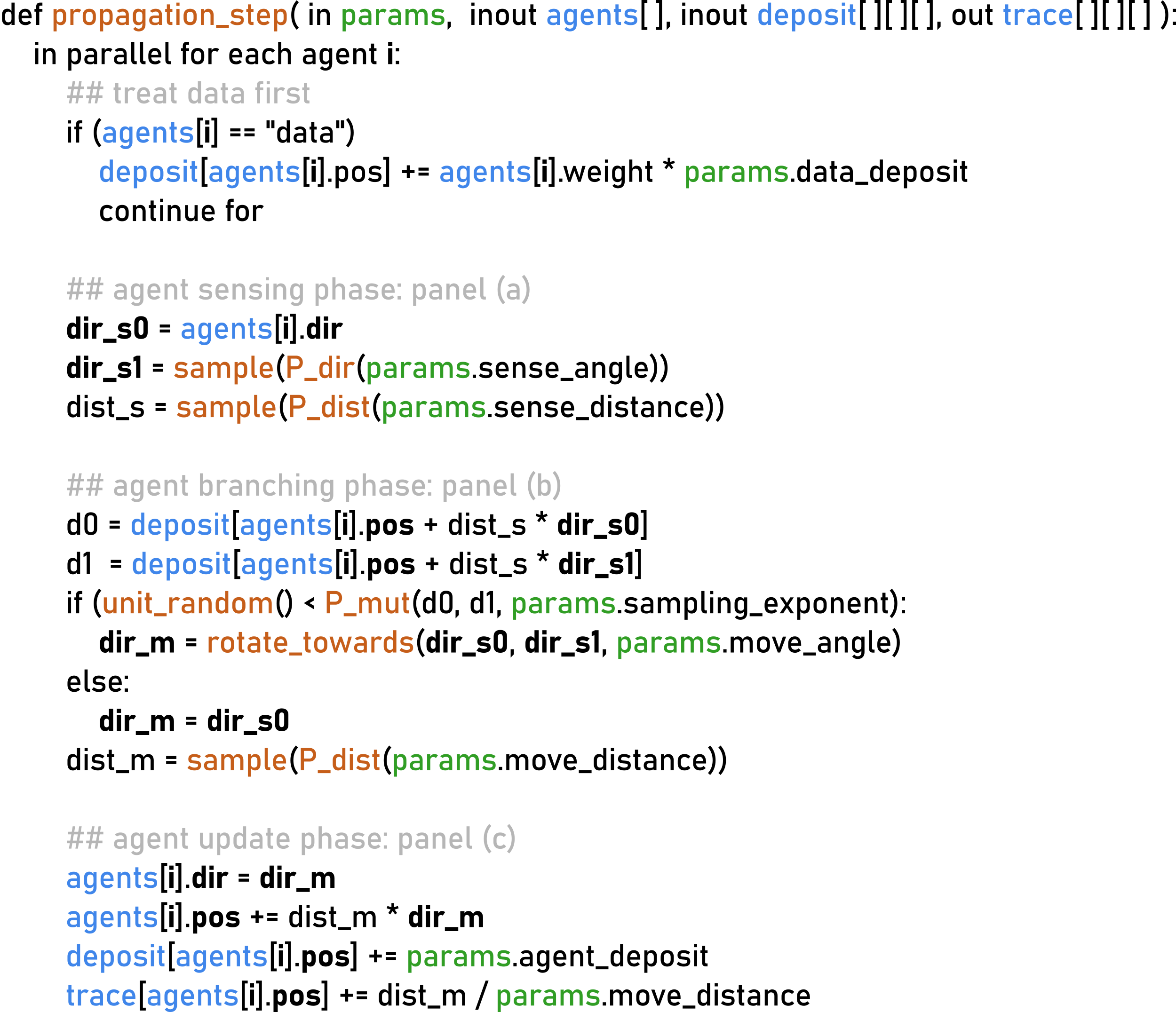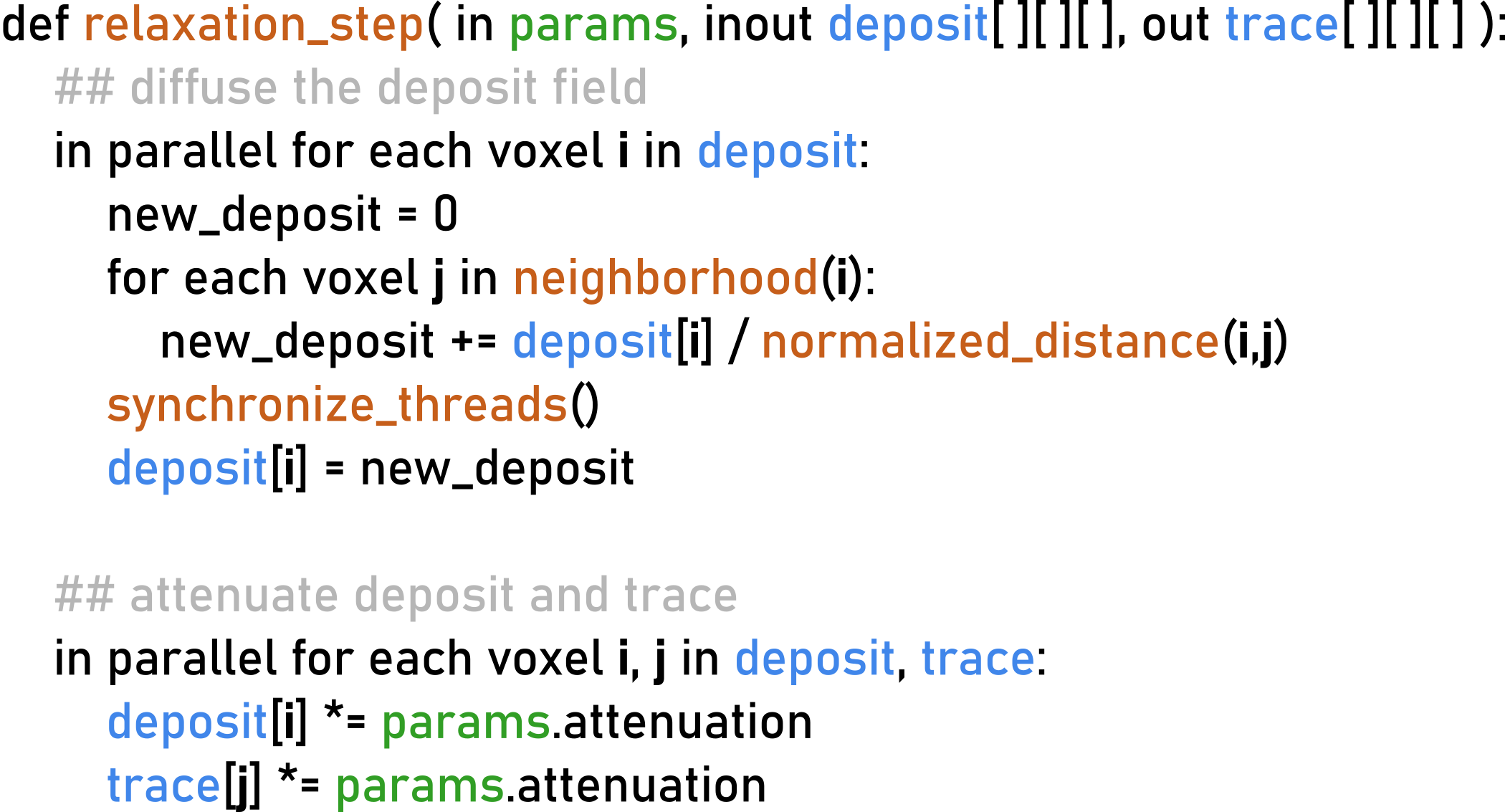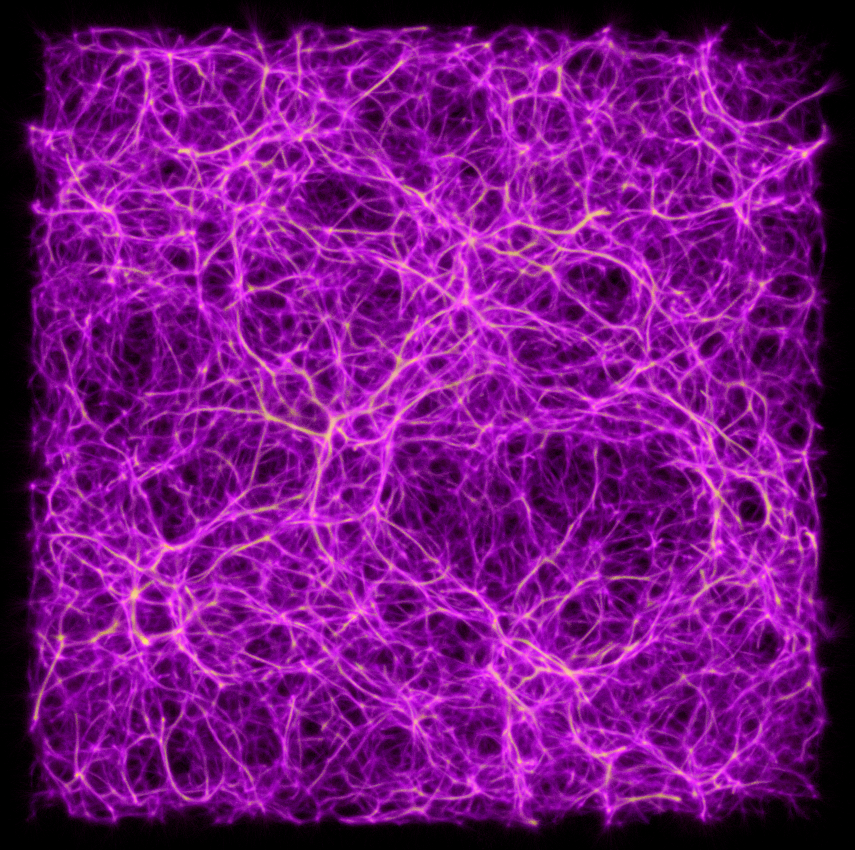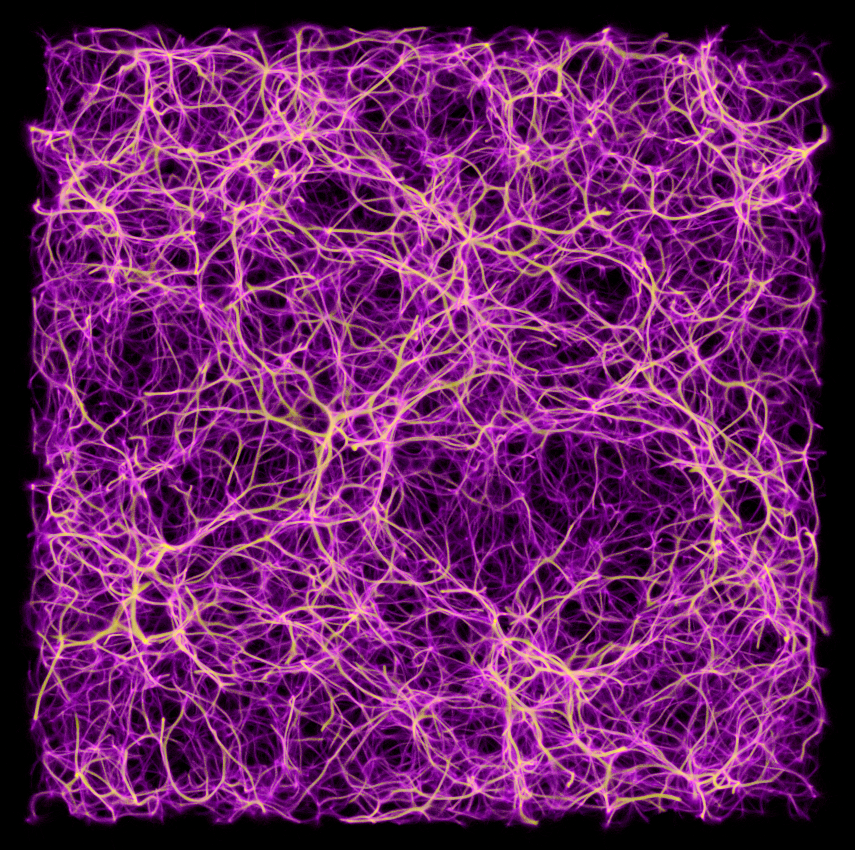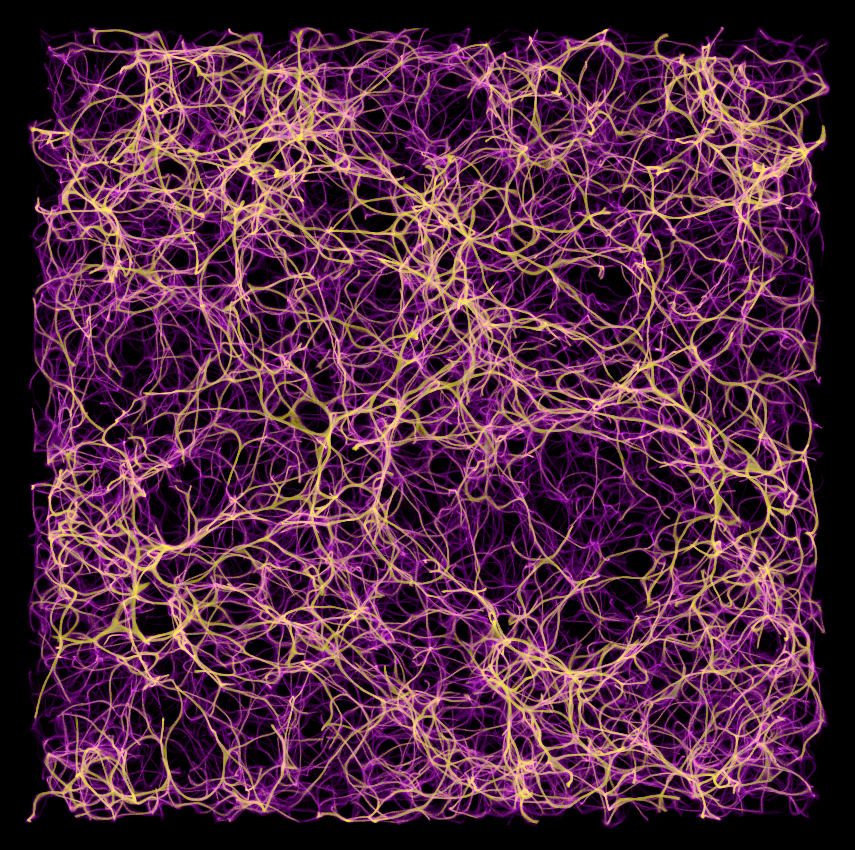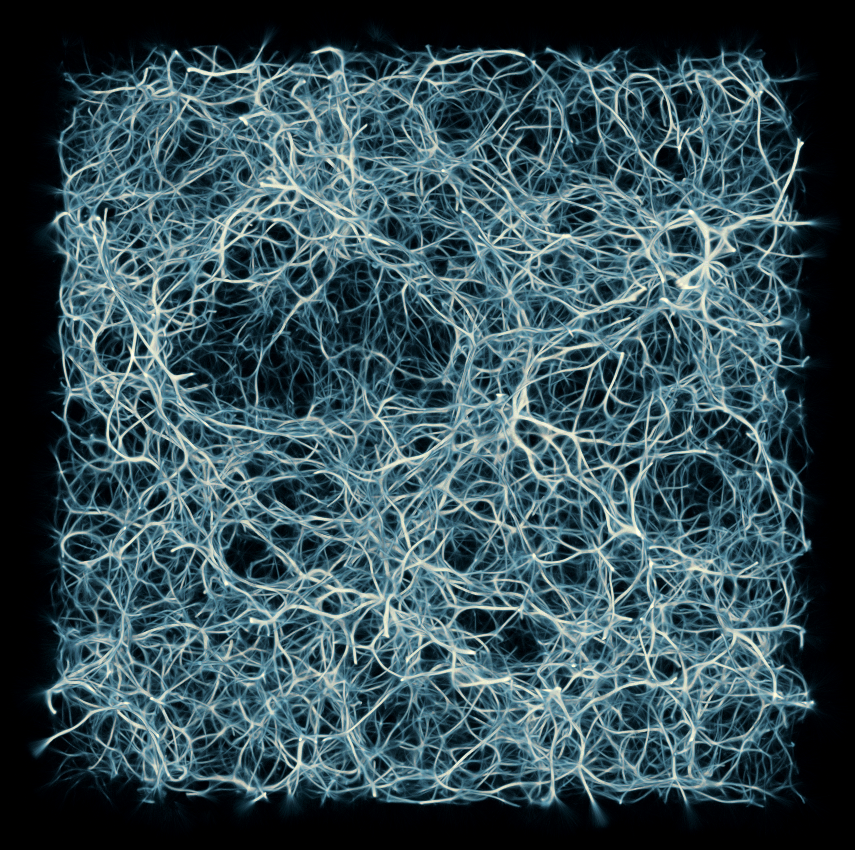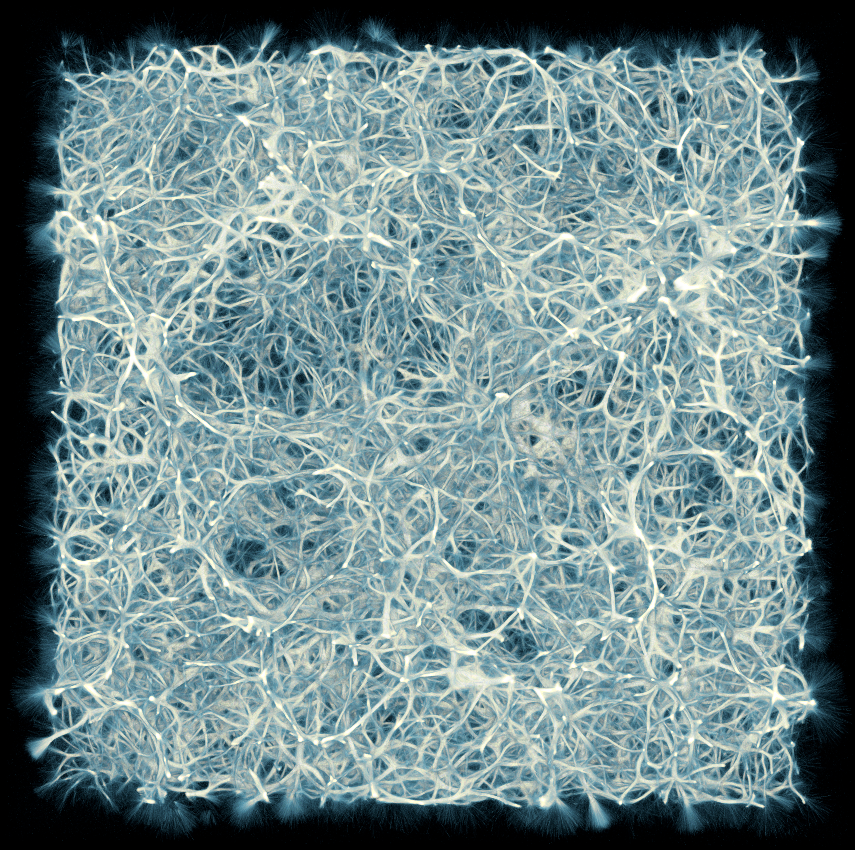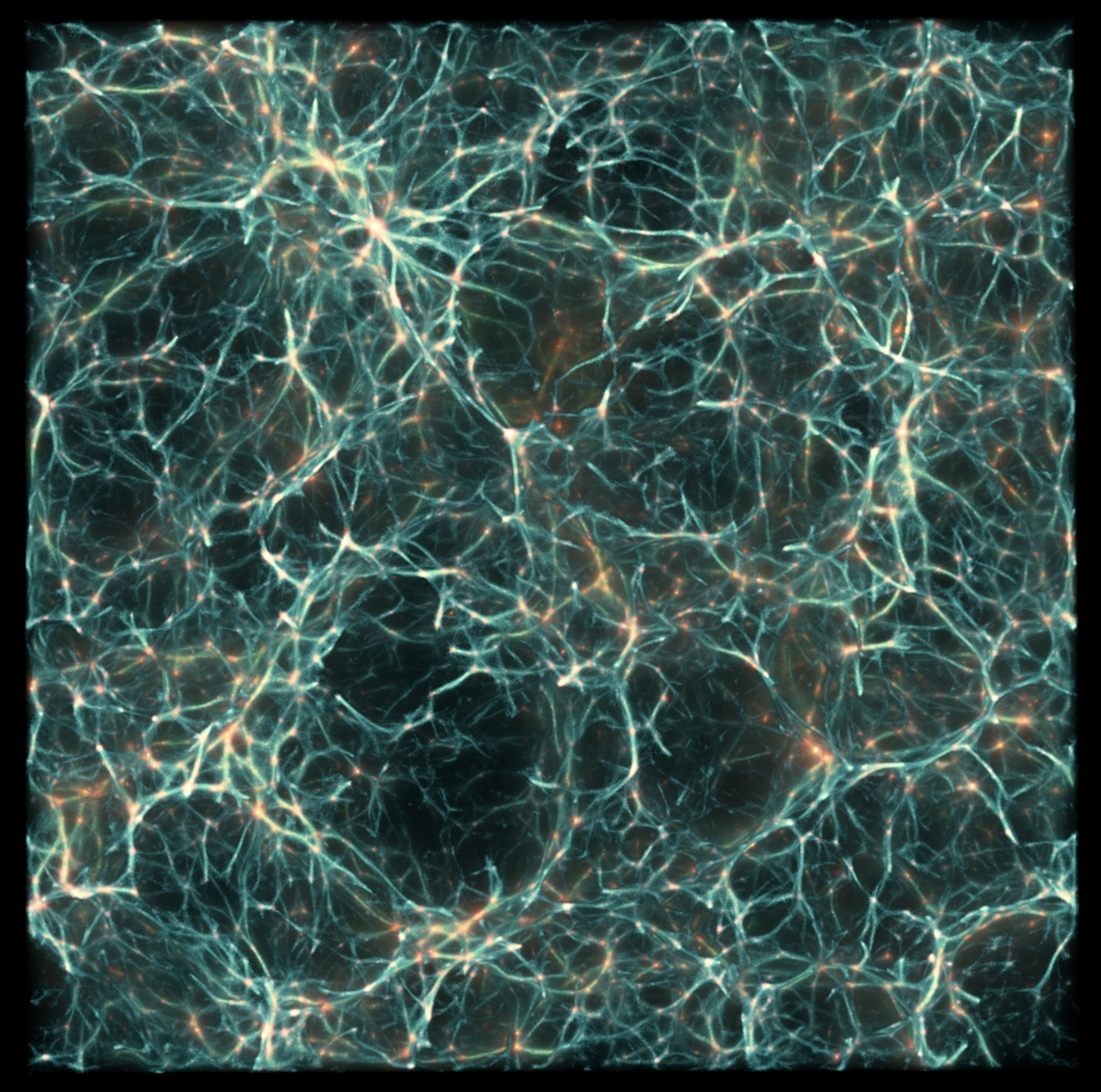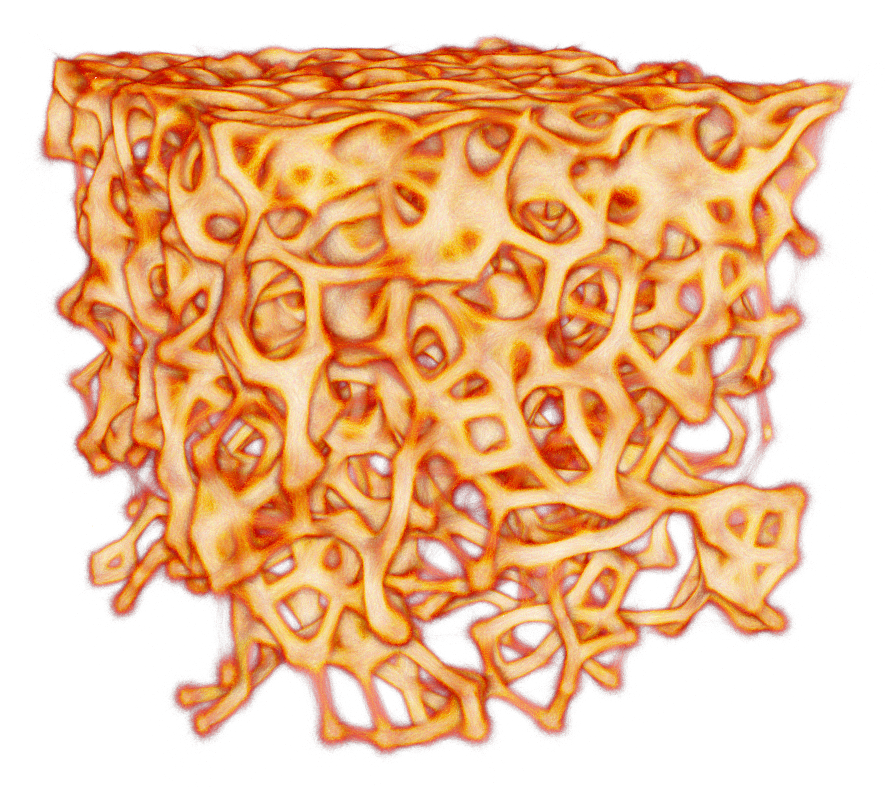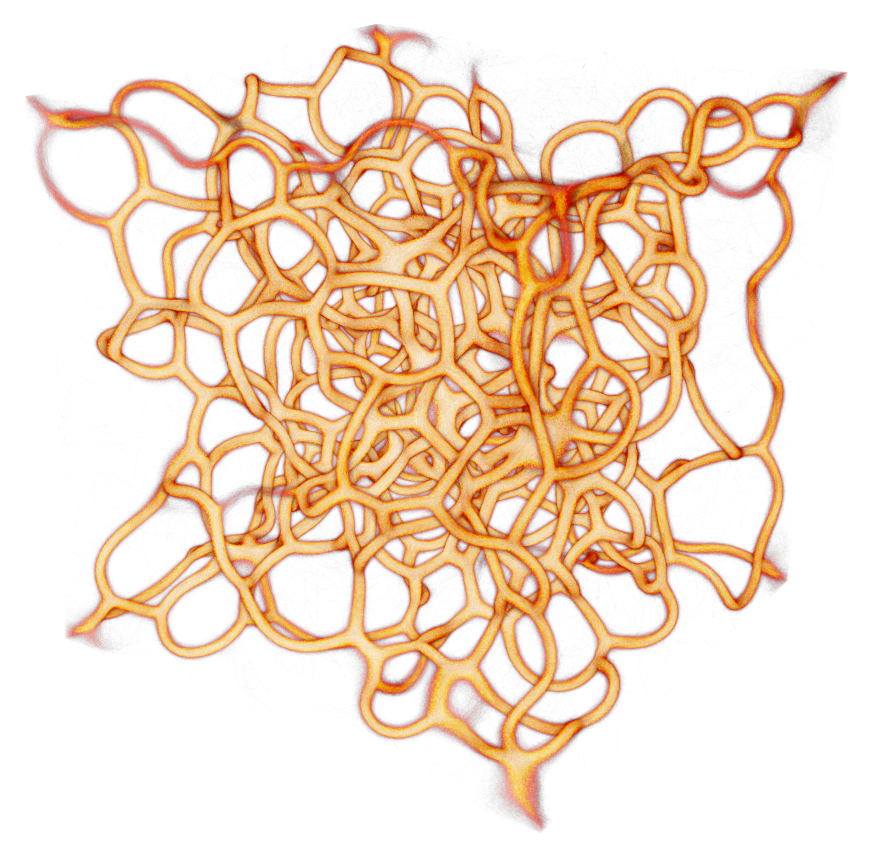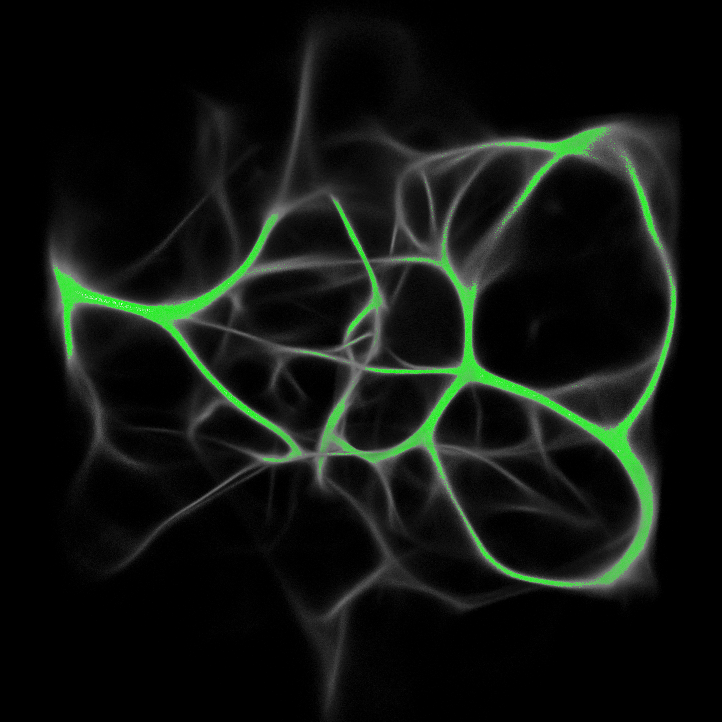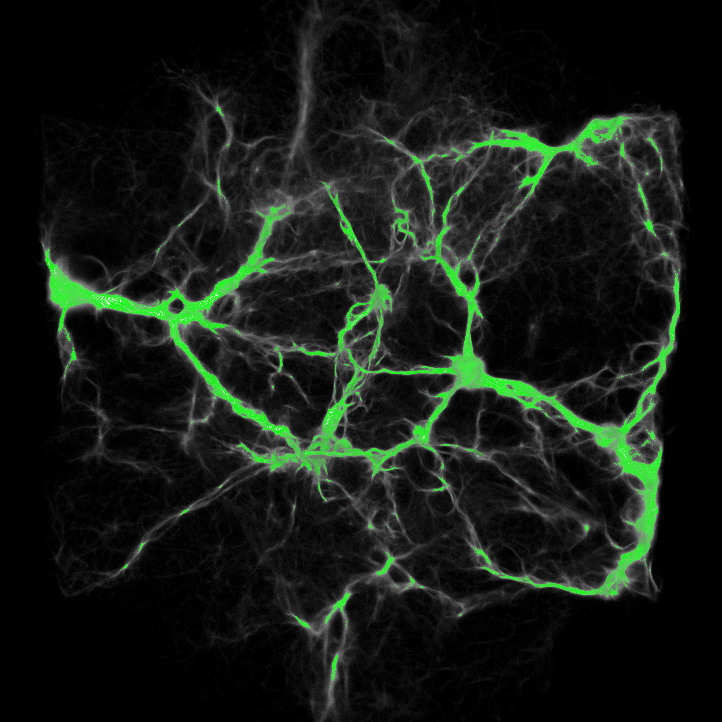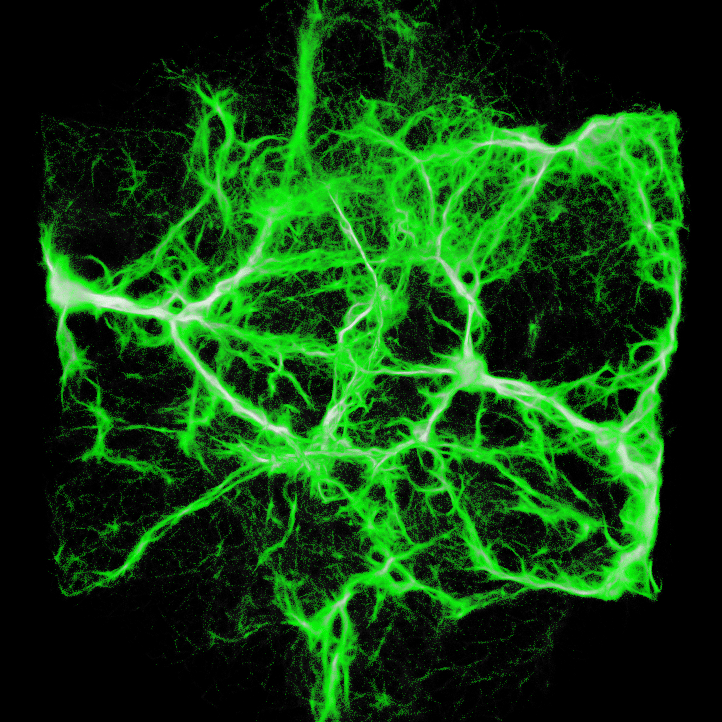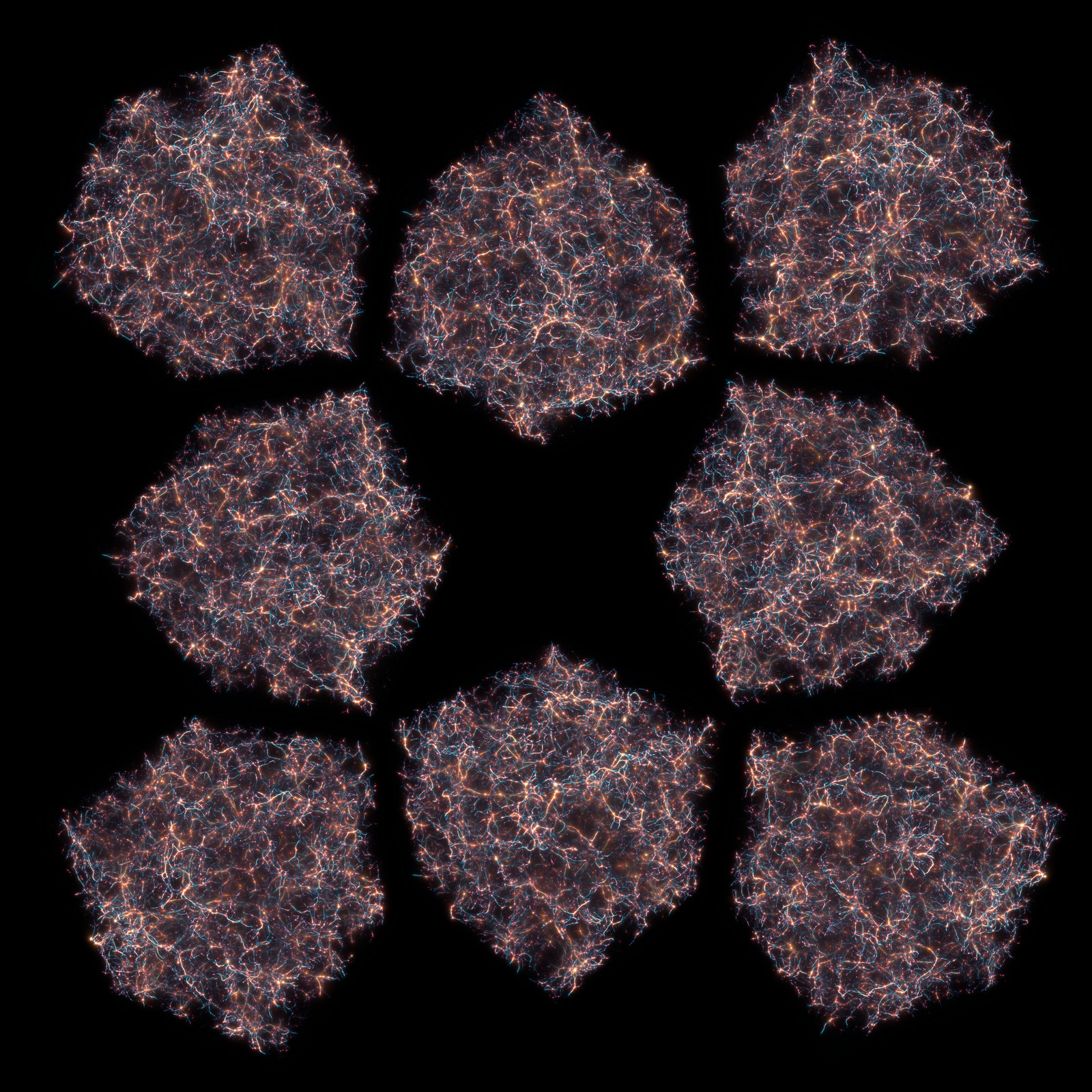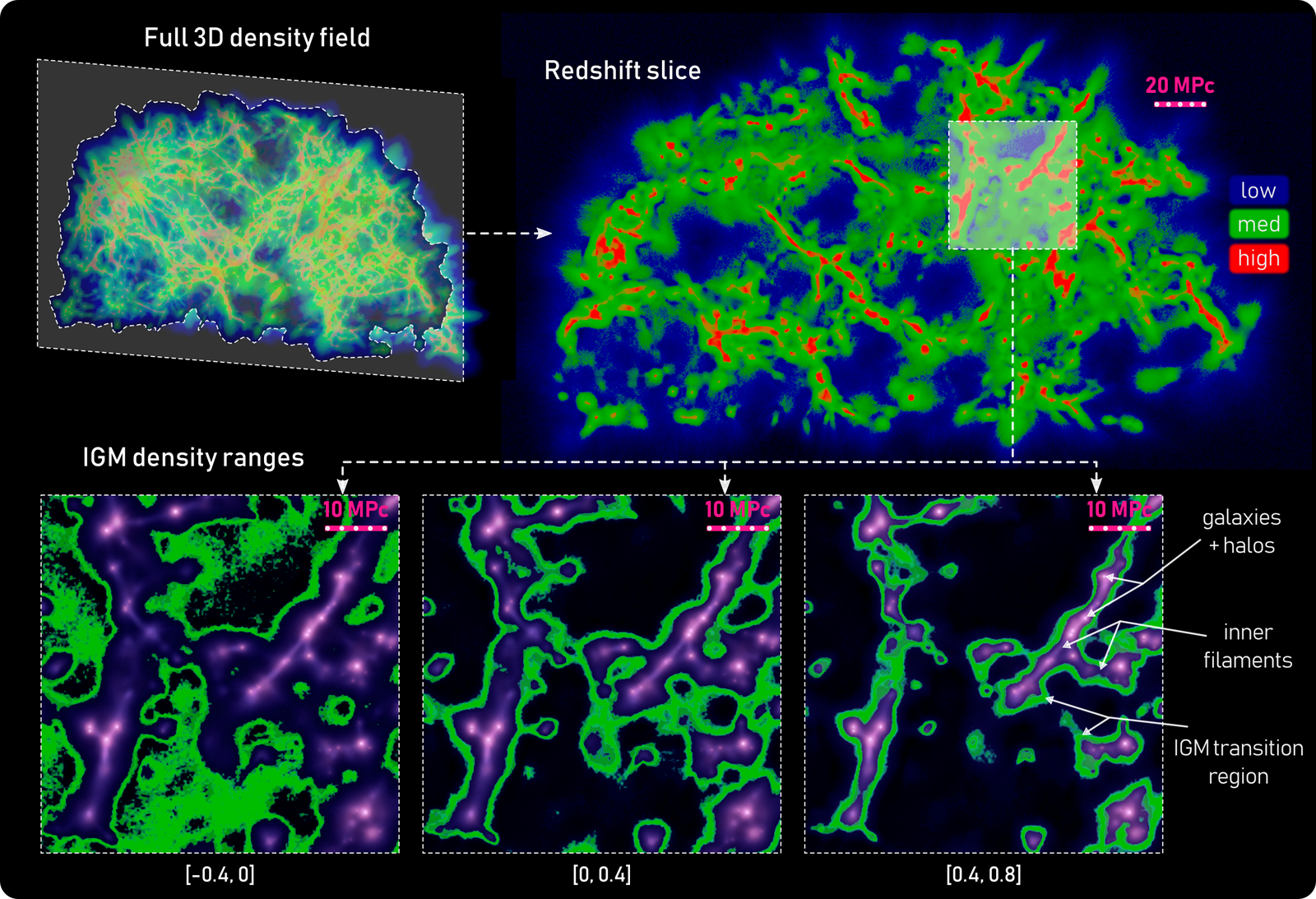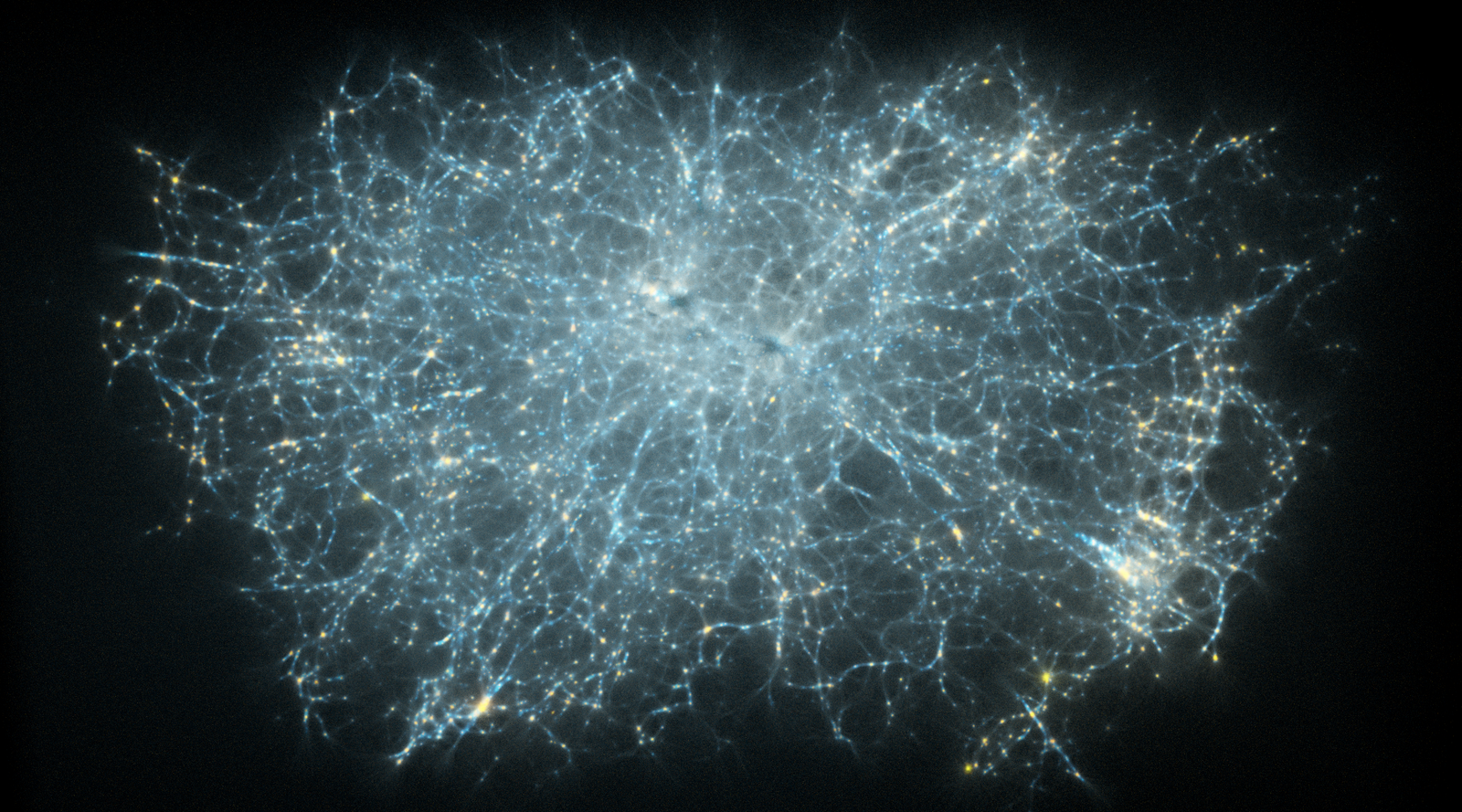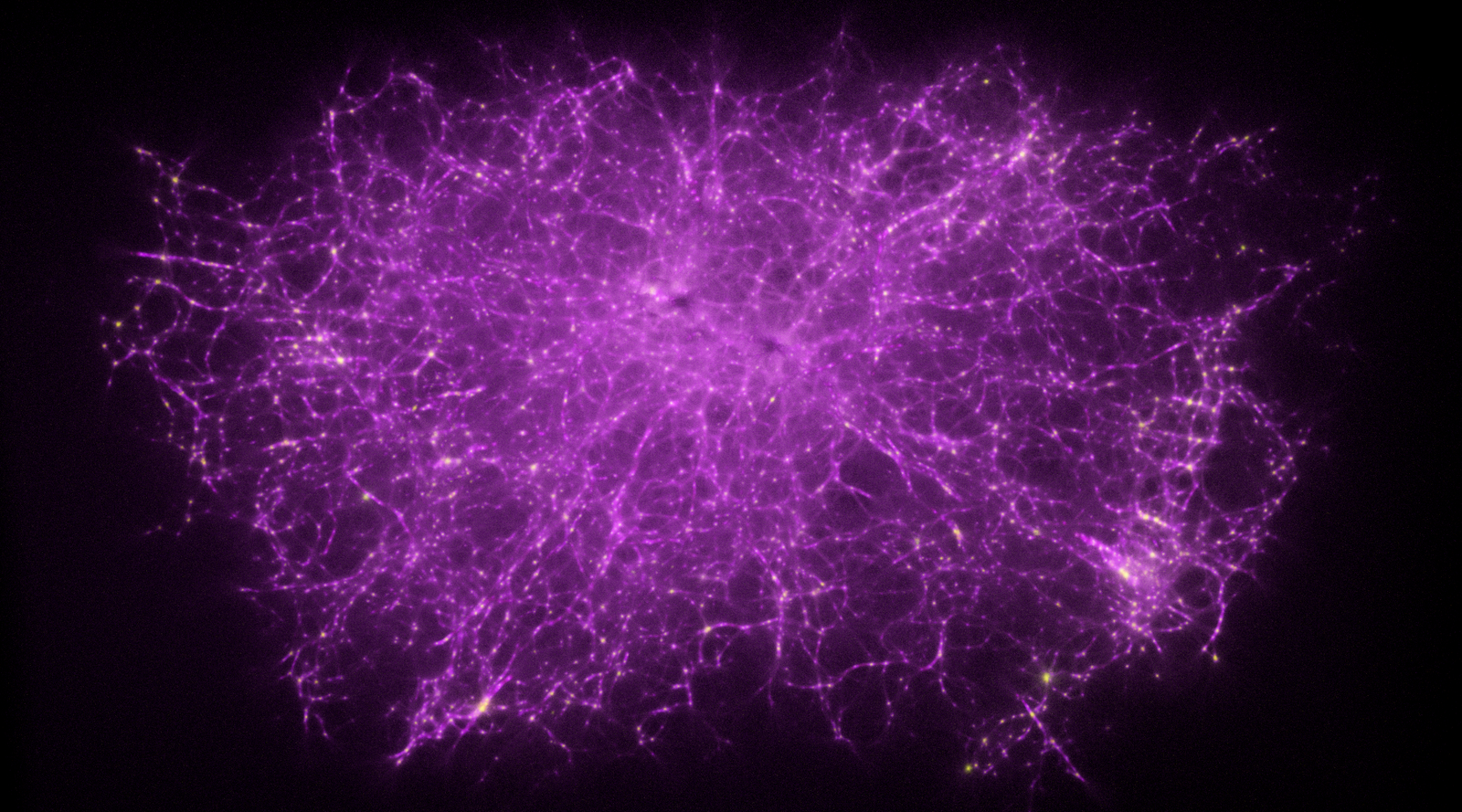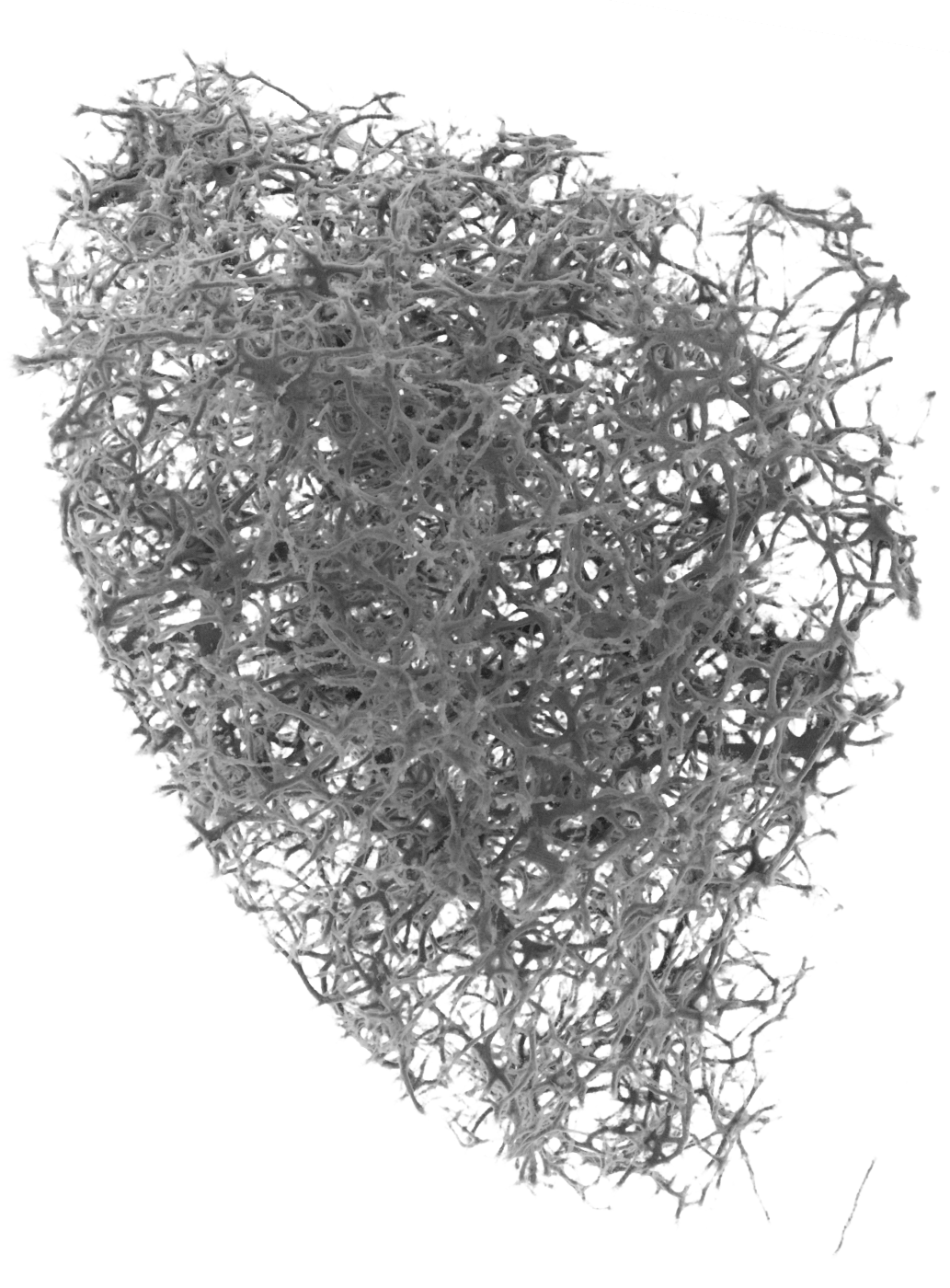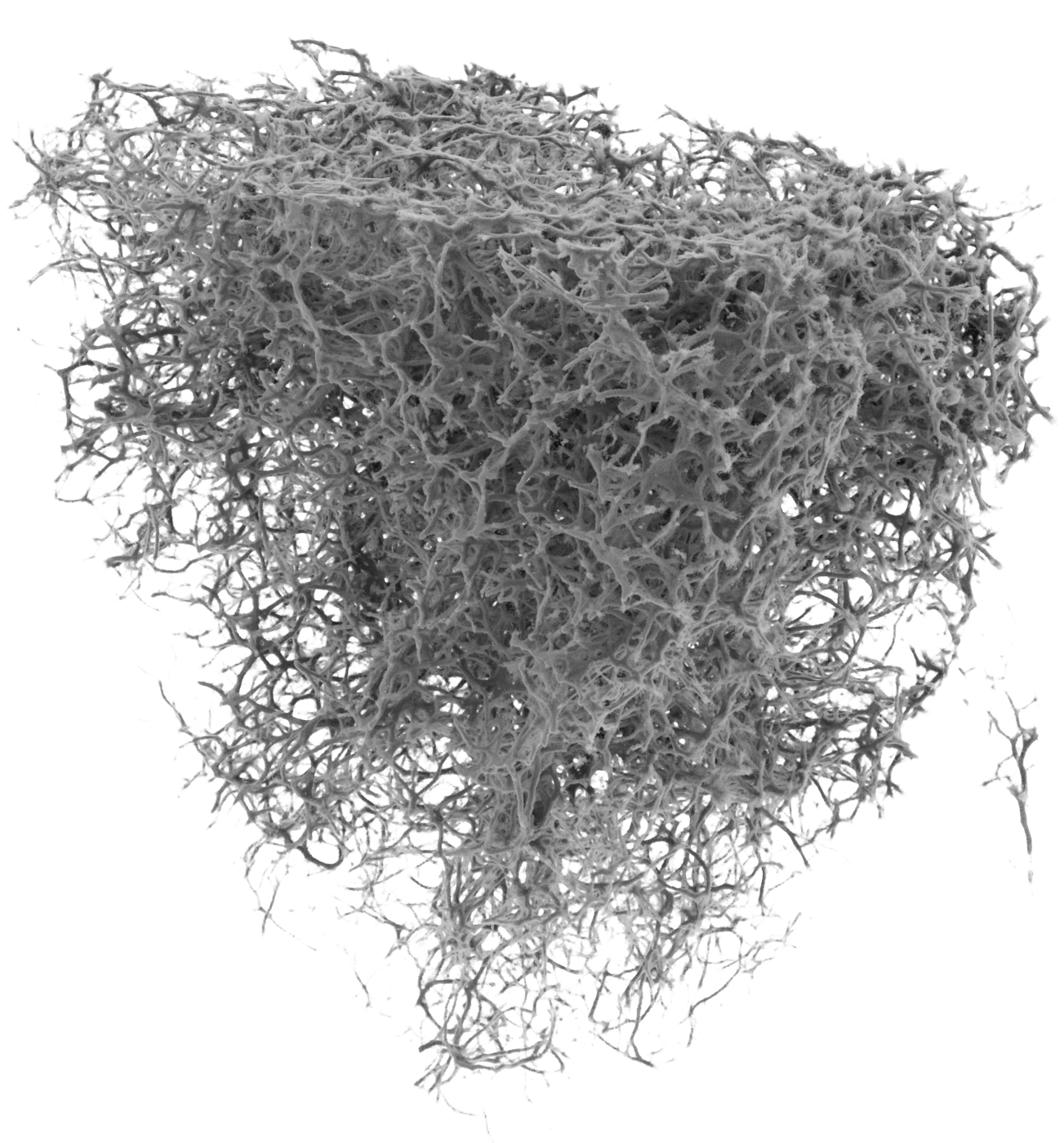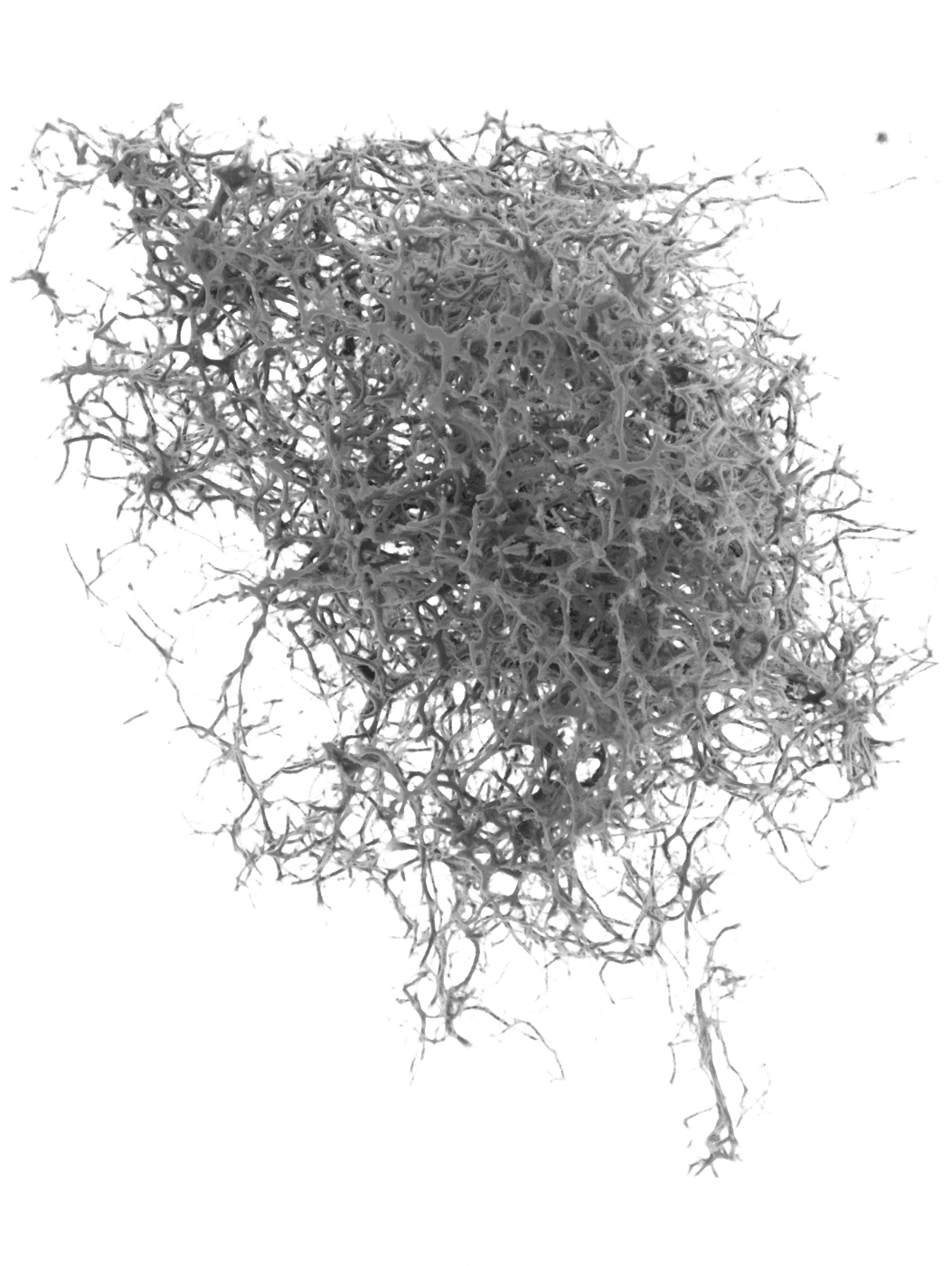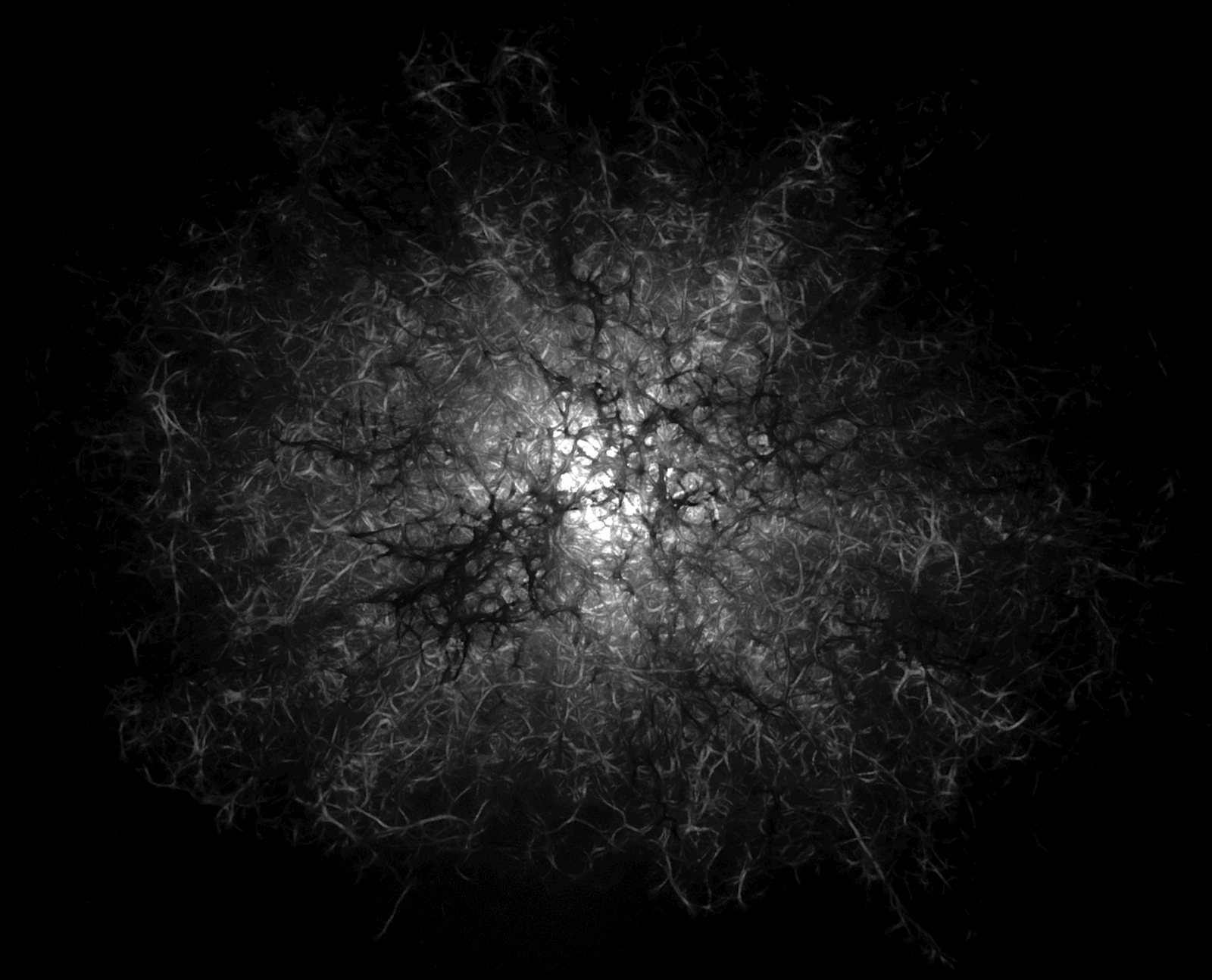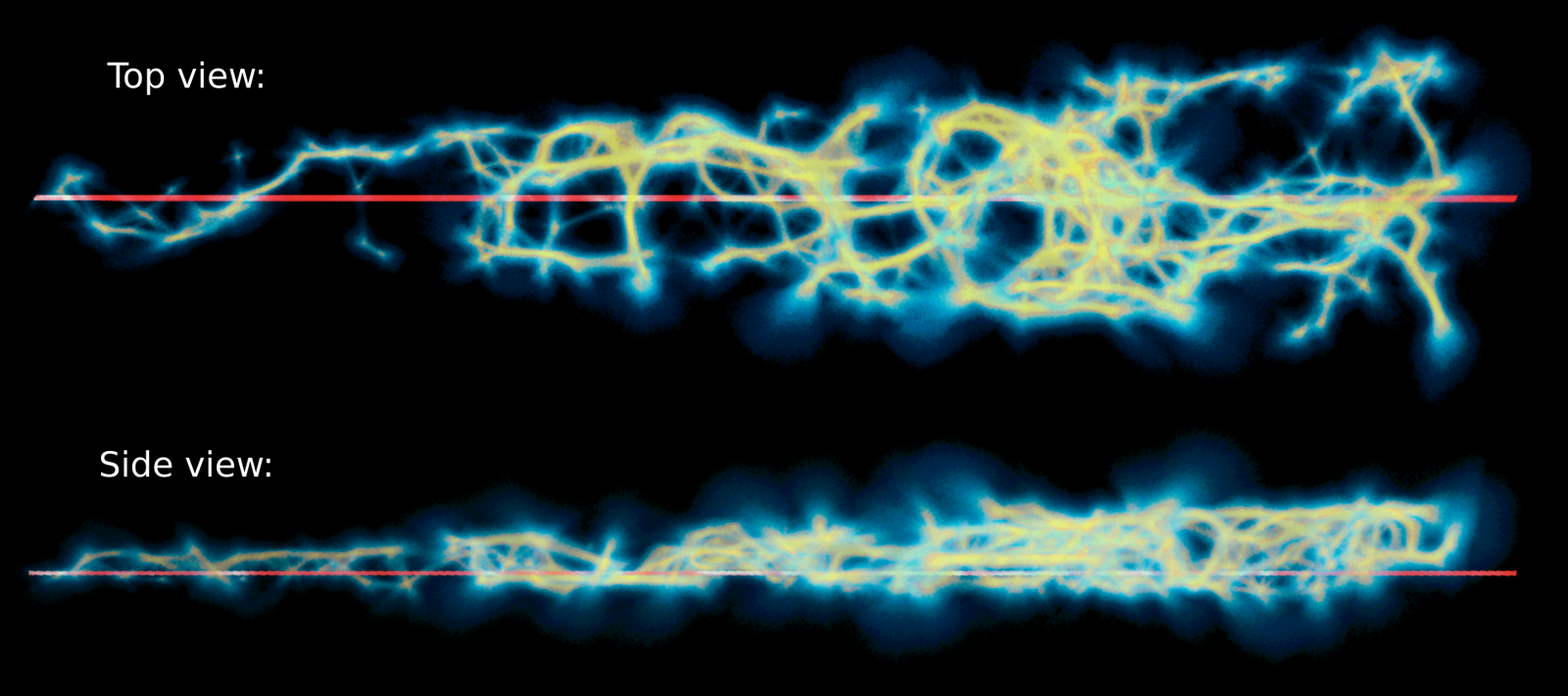Overview
Rhizome Cosmology is made by Polyphorm, an open-source software that combines an interactive implementation of a 3D Physarum machine, and a simultaneous volume visualization of the generated structures. Polyphorm has enabled novel scientific results through its ability to create detailed 3D density maps of the Cosmic web from sparse cosmological data – catalogues of galaxies and/or dark matter halos. Our main findings include the attribution of a major portion of the intergalactic
medium (IGM) to the large-scale filamentary structure of Cosmic web [Burchett2020a], and an explanation of an unusually large dispersion measure of a fast radio burst (FRB) event [Simha2021].
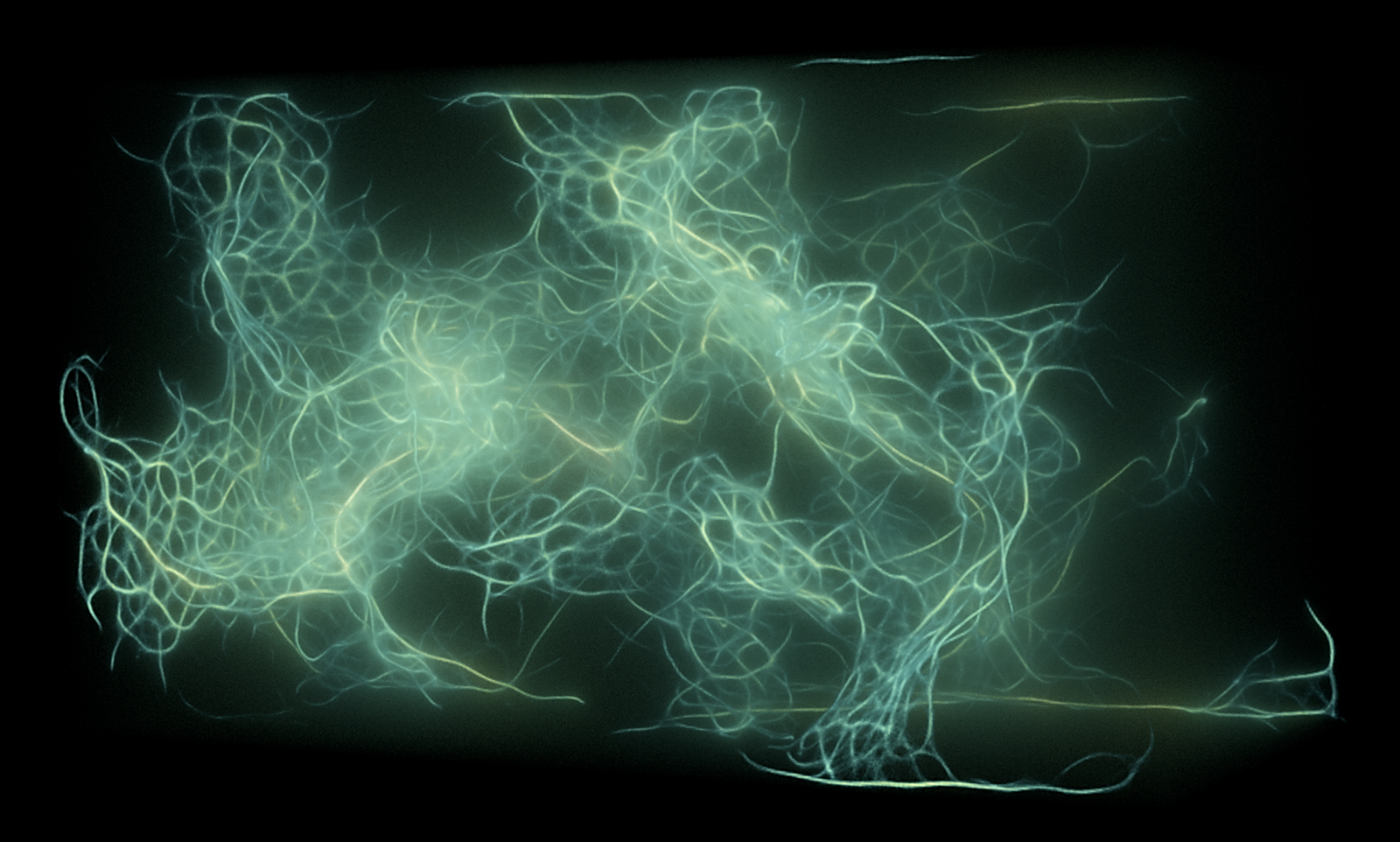
A detailed description of our simulation and visualization methodology is given in our prior works [Elek2021, Elek2022]. In this document, we visually map out the evolution of this project, focusing on three aspects:
- the initial idea of using a simulated Physarum machine for generating a scalar density field representing the 3D matter distribution of the Cosmic web,
- algorithmic design choices in our methodology, and
- its concrete applications in both simulated and observational cosmological datasets.
Monte Carlo Physarum Machine simulated in a three-dimensional transparent enclosure, at this point without any data to constrain its growth.
The value of this project comes from its interdisciplinary nature. By documenting its story through the lens of visualizations, we wish to inspire the curiosity to explore new connections between different scientific disciplines. We also hope that our story will be useful to those who aspire to invent other such methods, in the quest to understand the world both above and below.
